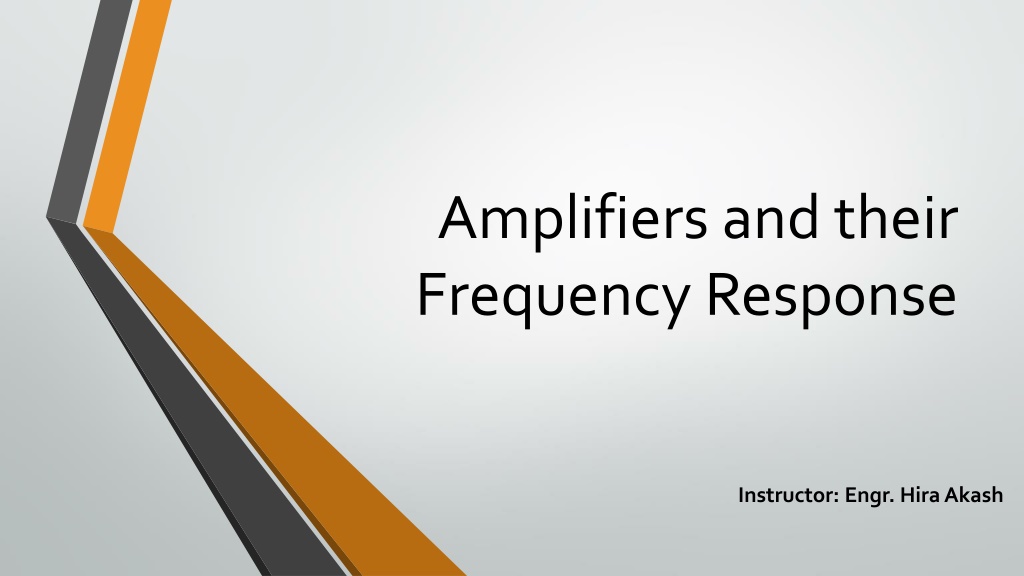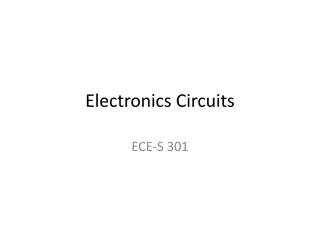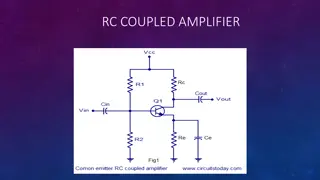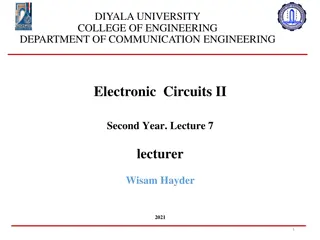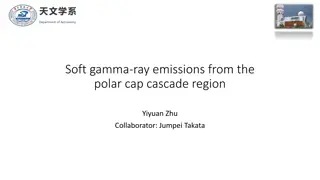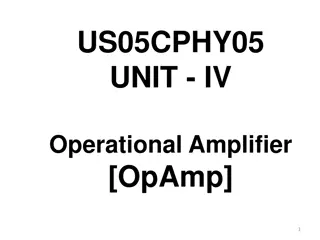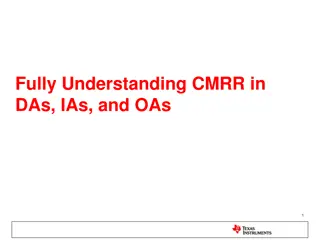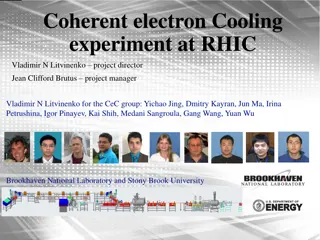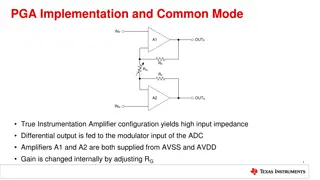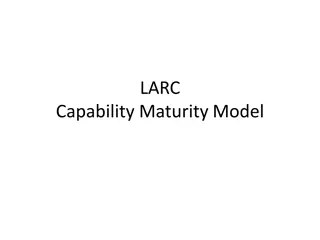Understanding Cascade Amplifiers and Their Applications
Cascade amplifiers are two-port networks designed with amplifiers connected in series, providing enhanced signal strength in various applications such as TV receivers and tuned RF amplifiers. These amplifiers use multiple stages to amplify the overall voltage gain, overcoming limitations of single-stage amplifiers. The bandwidth of cascade amplifiers decreases as the number of stages increases. Despite this drawback, they find use in television circuits and wideband amplifier setups due to their high input-output isolation.
Download Presentation

Please find below an Image/Link to download the presentation.
The content on the website is provided AS IS for your information and personal use only. It may not be sold, licensed, or shared on other websites without obtaining consent from the author. Download presentation by click this link. If you encounter any issues during the download, it is possible that the publisher has removed the file from their server.
E N D
Presentation Transcript
Amplifiers and their Frequency Response Instructor: Engr. Hira Akash
Content Cascade amplifier The Amplifier pass band The frequency plot Low frequency plot The un-bypassed emitter resistor The Miller Effect Instructor: Engr. Hira Akash
Cascade amplifier A cascade amplifier is a two-port network designed with amplifiers which are connected in series when every amplifier transmits its o/p to the second amplifiers input in a daisy chain. The problem in measuring the gain of the cascaded stage is the non-perfect coupling among two stages because of loading. The two stages of cascaded CE (common-emitter) Instructor: Engr. Hira Akash
Cont This amplifier is used to enhance the strength of a signal in a TV receiver. In this amplifier, the primary stage of the amplifier can be connected to the secondary stage of the amplifier. To build a practical electronic system, a single-stage amplifier is not enough. Even though the amplifier s gain mainly depends on parameters of the device as well as components of the circuit, there exists a higher limit of gain which can be attained from a single-stage amplifier. Therefore, the gain of this amplifier cannot be sufficient in practical application. To conquer this trouble, we require this amplifier s two or more stages to amplify the overall amplifier s voltage gain. As above one stage is used within series it is named as a multi-stage amplifier. The main drawback of the cascade amplifier is when several stages increases then the bandwidth will decrease. Instructor: Engr. Hira Akash
Applications of Cascade amplifier This amplifier is used in tuned RF amplifiers within television circuits. This amplifier can also be used as a wideband amplifier. The isolation offered among input & output with these amplifiers is extremely high. Instructor: Engr. Hira Akash
The Amplifier pass band A band pass filter is an amplifier stage design to pass a range of frequencies while rejecting frequencies outside the upper and lower limits of the pass band. These filters can be made by combining the first order low pass and high pass filters. The principal characteristic of aBand Pass Filteror any filter for that matter, is its ability to pass frequencies relatively unattenuated over a specified band or spread of frequencies called the Pass Band . Instructor: Engr. Hira Akash
Cont For a low pass filter this pass band starts from 0Hz or DC and continues up to the specified cut-off frequency point at -3dB down from the maximum pass band gain. Equally, for a high pass filter the pass band starts from this - 3dB cut-off frequency and continues up to infinity or the maximum open loop gain for an active filter. Instructor: Engr. Hira Akash
Cont.. This cascading together of the individual low and high pass passive filters produces a low Q-factor type filter circuit which has a wide pass band. The first stage of the filter will be the high pass stage that uses the capacitor to block any DC biasing from the source. This design has the advantage of producing a relatively flat asymmetrical pass band frequency response with one half representing the low pass response and the other half representing high pass response as shown. Instructor: Engr. Hira Akash
Frequency plot A frequency plot is a graphical data analysis technique for summarizing the distributional information of a variable. The response variable is divided into equal sized intervals (or bins). The number of occurrences of the response variable is calculated for each bin. The frequency plot then consists of: Vertical axis = frequencies or relative frequencies; Horizontal axis = response variable (i.e., the mid-point of each interval). There are 4 types of frequency plots: 1. frequency plot (absolute counts); 2. relative frequency plot (convert counts to proportions); 3. cumulative frequency plot; 4. cumulative relative frequency plot. Instructor: Engr. Hira Akash
Bypass resistor Abypasscapacitor is a capacitor that shorts AC signals to ground, so that any AC noise that may be present on a DC signal is removed, producing a much cleaner and pure DC signal. Instructor: Engr. Hira Akash
purpose of the Unbypassed emitter resistor The unbypassed emitter resistorRE1 serves three functions: 1. Adjust the voltage gain to a desired value: When RE1 = 0, the voltage gain of the amplifier is as high as it can be for the circuit at hand. Setting RE1 to a nonzero value provides a mechanism to decrease the gain to a desired value. Instructor: Engr. Hira Akash
What are the effects of an unbypassed emitter resistor? In the emitter follower configuration, the emitter resistor is not bypassed and the output is taken off the emitter with unity gain and higher input impedance. In a common-emitter configuration, the output signal is taken off the collector that has a resistor to Vcc; and the emitter resistor is bypassed by a capacitor so that the emitter is at AC ground but has some DC bias. However, if the bypass capacitor is removed, there will be negative feedback to the base-emitter input signal and this should reduce the gain of the amplifier stage. A circuit designer could use resistors on both, the collector and the emitter, and take signals off both emitter and collector to feed the next stage of a tandem pair of PNP and NPN transistors. Instructor: Engr. Hira Akash
Miller effect In electronics, the Miller effect accounts for the increase in the equivalent input capacitance of an inverting voltage amplifier due to amplification of the effect of capacitance between the input and output terminals. The virtually increased input capacitance due to the Miller effect is given by Instructor: Engr. Hira Akash
Miller effect where -Av is the voltage gain of the inverting amplifier(Av positive) and C is the feedback capacitance Although the term Miller effect normally refers to capacitance, any impedance connected between the input and another node exhibiting gain can modify the amplifier input impedance via this effect. These properties of the Miller effect are generalized in the Miller theorem. The Miller capacitance due to parasitic capacitance between the output and input of active devices like transistors and vacuum tubes is a major factor limiting their gain at high frequencies. Miller capacitance was identified in 1920 in triode vacuum tubes by John Milton Miller. Instructor: Engr. Hira Akash
